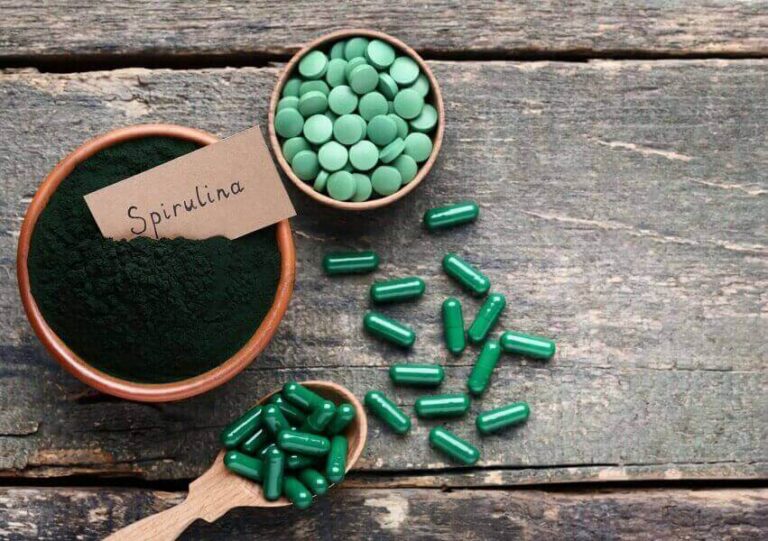Sugar alcohols are one of the most popular table sugar alternatives. Their taste is very similar to sugar, but they are low in calories and do not alter blood insulin levels.
Several studies suggest using sugar alcohols as a healthy alternative to sweeteners for people with diabetes. (1,2,3)
This article discusses the health benefits, side effects, and risks of sugar alcohol.
What are sugar alcohols?
Sugar alcohols are a type of compound with a hybrid chemical structure between sugars and alcohol. But technically, they are neither. Because their properties are more similar to vegetable fiber, they are also known as low-digesting carbohydrates. (6)
Most sugar alcohols taste sweet. However, because the digestive system can hardly digest them, they are low in calories.
Sugar alcohols are generally made in a laboratory. But unlike artificial sweeteners, sugar alcohols can also be found naturally in some fruits, vegetables, and plants.
Examples of sugar alcohols
Today, several examples of sugar alcohols are used as sweeteners. They are different in taste, calorie content, and health effects. Examples of sugar alcohols are described below:
- Xylitol
Xylitol is the sugar alcohol better known and studied. Its flavor is practically the same as regular sugar, but it has 40% fewer calories.
Xylitol is usually produced in a laboratory from xylose. Still, it can also be found naturally in the bark of the birch, the xylan plant, and is located in small amounts in some fruits and vegetables.
Xylitol is used to make gum, candy, and personal hygiene products such as mouthwash or toothpaste.
Xylitol is considered safe sugar alcohol for health; there are no known severe side effects in doses of up to 20 grams per day. (1) If consumed in excess in some people, it can cause stomach upset and diarrhea.
- Erythritol
Erythritol is another sugar alcohol that tastes very similar to table sugar. It has a sweetening power of 70% compared to sugar but provides only 5% calories.
Erythritol does not have the same digestive side effects as most other sugar alcohols because most of it is absorbed through the bloodstream and then eliminated in the urine. (2)
Fruits like watermelon, pear, and grapes naturally have small erythritol, as do mushrooms and fermented foods like cheese, wine, beer, and sake.
- Maltitol
Maltitol is a sugar alcohol that is made from maltose. Its taste and mouthfeel are very similar to regular sugar.
The sweetening power of maltitol is almost the same as table sugar, so it is used in similar amounts. However, this is the sugar alcohol with the highest risks, particularly for people with diabetes. The glycemic index of maltitol is about 35 units; although it is lower than ordinary sugar, it is significant. (4)
Maltitol has been shown to alter blood sugar levels, so it is not recommended for people with insulin metabolism problems. Although products with maltitol may appear to have no added sugar, too much can be harmful to people with diabetes.
- Sorbitol
Sorbitol is a sugar alcohol that has been used for more than 60 years. Its relative sweetness equals 60% of the sweetness of table sugar with a third of the calories. Sorbitol feels cold in the mouth due to its ability to absorb heat. (3)
Compared to other sweeteners, sorbitol practically does not alter blood insulin levels, making it suitable for people with diabetes. It is a frequent ingredient in sugar-free foods and beverages.
The main risk of this sweetener is that it can cause digestive problems. Many studies have confirmed that large amounts of sorbitol (20-30 g / day) have caused abdominal pain. (3)
- Isomaltol
Isomaltol is a sugar alcohol made from sugar, has a shallow glycemic index, is low in calories, and has properties similar to vegetable fiber.
- Lactitol
As its name suggests, lactitol is made from lactose, the sugar in milk. Studies suggest that its consumption may have probiotic effects as benefits, and because it changes the intestinal pH, it could increase the absorption of minerals in the intestine. (5)
Benefits of sugar alcohols
The benefits of sugar alcohol are vast. In particular, it has been confirmed that they can be helpful for oral health and prevent insulin resistance. The benefits of sugar alcohols are:
- Help prevent cavities
Sugar feeds certain bacteria in the mouth, multiplying and eroding the teeth’ protective enamel. Unlike sugar, most sugar alcohols cannot be metabolized by bacteria in the mouth.
This means that they can have beneficial effects on microbes that live in the mouth that other sweeteners do not share, so one of the benefits of sugar alcohols like xylitol, erythritol, and sorbitol is to protect against tooth decay. (8) One of the main reasons they are used to make gum and toothpaste.
- Act as a prebiotic
Sugar alcohols can feed the friendly bacteria in your gut, having a prebiotic effect similar to plant fiber.
In particular, studies suggest that xylitol and lactitol stimulate the growth and metabolic activity of Anaerostipes spp. in the human colon. A microorganism with known health benefits. (5.7)
- Regulate blood sugar levels
The glycemic index of sugar alcohols is low (between 0 and 35 units), while table sugar is about 60-70 units.
Sugar alcohols are among the best alternatives to sugar for controlling blood sugar spikes. The maximum recommended amount to obtain this benefit without side effects is about 7-8 g per day. (6)
Are sugar alcohols suitable for people with diabetes?
To determine whether sugar alcohols are suitable for diabetics or not, you need to understand their glycemic index values.
The glycemic index is an indicator of how foods increase blood sugar levels. For people with diabetes, consuming foods with a high glycemic index is particularly risky.
The glycemic indices of sugar alcohols are not the same, as seen from the list below. (5) Glycemic index values of sugar alcohols:
- Xylitol: 13
- Erythritol: 0
- Maltitol: 35
- Sorbitol: 9
- Isomaltitol: 9
- Lactitol: 6
As you can see from the glycemic index list, most sugar alcohols have little effect on blood sugar levels. In the case of erythritol, the glycemic index is zero. So they are ideal sugar substitutes for people with diabetes.
The only exception is maltitol, which has a glycemic index of 35. For this reason, products with maltitol are not recommended for people with prediabetes or diabetes.
Risks and Side Effects of Sugar Alcohol
Sugar alcohols are considered safe for most people. It is important to know that most studies have ruled out its possible risk of causing cancer, both from long-term and short-term use. (4,5,6)
The main health risk from sugar alcohol can cause gastrointestinal problems, particularly having laxative effects. Possible side effects of sugar alcohols are:
- Xylitol – Occasionally noticed temporary laxation and gastrointestinal upset when consuming more than 20 grams per day.
- Erythritol – The side effects of its excessive consumption are flatulence and diarrhea.
- Isomaltol – Excessive consumption of isomaltol causes laxative effects.
- Lactitol – Bloating and flatulence after consuming 20 g in a single dose.
- Maltitol – Abdominal bloating and laxative effect when consumed in large quantities.
- Mannitol – in amounts greater than 20 mg/kg of body weight can cause abdominal pain, flatulence, loose stools, or diarrhea.
- Sorbitol – Consumption greater than 20 g per day produces abdominal pain. Osmotic diarrhea when doses greater than 50 grams per day are ingested.
ABSTRACT
- Sugar alcohols are a low-calorie natural table sugar substitute.
- Except for maltitol, they have little or no effect on blood sugar values , so they are allowed for people with diabetes.
- Sugar alcohols have the health benefits of improving dental health, regulating blood sugar levels, and can improve intestinal flora.
- Xylitol and erythritol are the most used industrially; they make chewing gums and toothpaste.
- The most common side effects are gastrointestinal problems such as flatulence and diarrhea. In particular when consuming more than 10-20 grams at a time.







